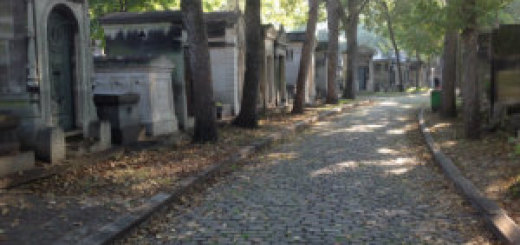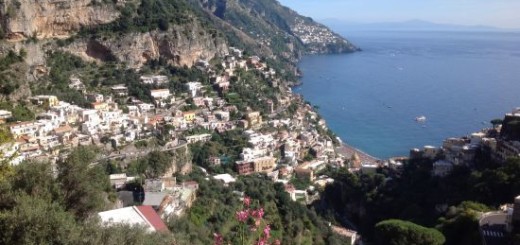Budapest – a Tale of Two Cities

Two for the price of one, really. This Hungarian capital straddles both sides of the Danube River. On one side is Buda, with its hilltop former palace and Gothic church. On the other is Pest, with its grand boulevards and grandiose 19th century architecture. The two cities joined as one in 1873 and these days is one of the largest cities in the European Union, having roughly 3.4 million inhabitants in the greater metropolitan area.

Our river ship docked in the best of all locations – opposite the magnificent Parliament Building and within walking distance of the Castle district and the famous Széchenyi Lánchíd or Chain Bridge, one of eight bridges that link the two cities. But fortunately, due to the steep terrain up to the Castle area, our ship provided a coach tour for us.

The Citadella on Gellért Hill on the Buda side was our first stop. This defensive area was created after an uprising in 1848 and was subsequently used by the Soviets in 1956 to bombard Budapest in an effort to quell the revolution against them. The Liberty Statue, which had originally been erected by them after WWII to commemorate their victory over the Nazis, was modified in 1989 by the new democracy: “To the memory of those all who sacrificed their lives for the independence, freedom, and prosperity of Hungary”.

From Gellért Hill we could look across to the former palace which now houses the Hungarian National Gallery, the Budapest History Museum and the National Széchényi Library. The base of this hill is also the site of the Gellért Baths, one of the many popular thermal baths that operate in Budapest.
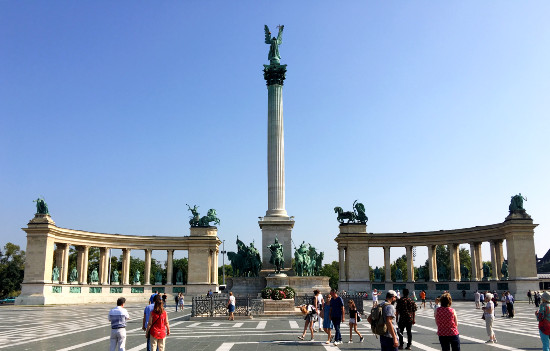
Next on our coach tour was a drive across the river to Pest, where we stopped at Heroes’ Square – a collection of monuments and statues representing the ancient Magyar chieftains and other national heroes. The central column, the Millenium Memorial, depicts the Archangel Gabriel holding the crown of St Stephen, the first king of Hungary.
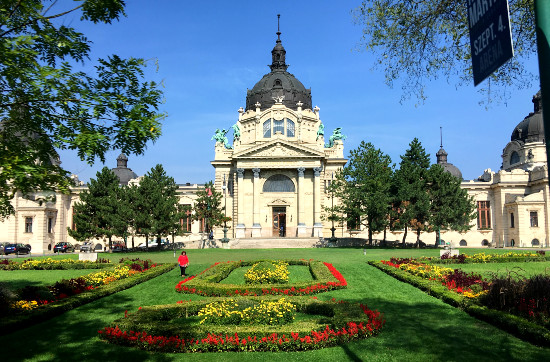
Back on the coach we travelled through the main city park precinct (Városliget) and past the most well known of the city baths, the Széchenyi Baths, the largest natural hot spring spa in all Europe. Opened in 1913, this neo-Gothic spa has over 15 pools – 3 of them are large outdoor swimming pools and the rest are smaller and indoors. Having seen pictures of these outdoor pools on various travel shows I was keen to try, but sadly we did not have enough time to go back there.

Before returning us to the ship for lunch, the coach took us back across the river to the Buda side once more to visit the Castle Hill district. This area (Várhegy) is a UNESCO World heritage Site. The views from there are truly spectacular.
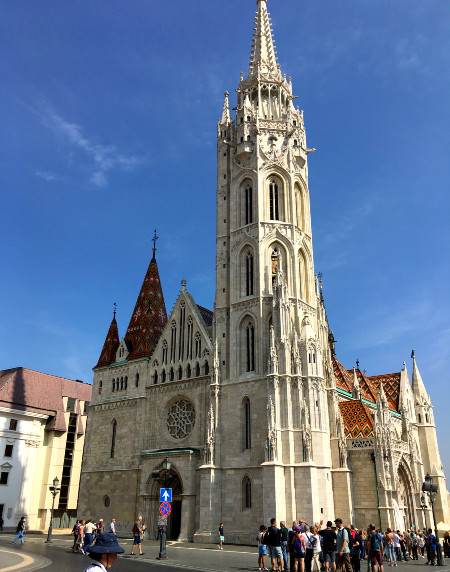
Apart from the former Buda Castle, it is also the site of Matthias Church and the Fisherman’s Bastion. Commenced in the 13th century and enlarged and renovated over the centuries, the Matthias church – named after a king rather than a saint – is neo-Gothic in style with beautiful coloured diamond-patterned roof tiles. The church was used as a coronation church by Hungarian kings for centuries and also a mosque for over 150 years by the Ottoman Turks. It draws crowds of tourists due to its location on the hill, its classical music concerts and choir performances, and the number of small shops and cafés nearby for securing souvenirs or snacks.
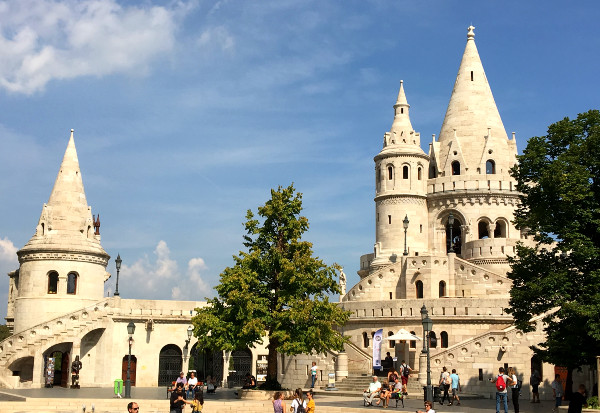
My favourite spot was the Fisherman’s Bastion area, where we took loads of photos of the Danube River and Pest beyond. It is not very old compared to the other buildings, having been built between 1895 and 1902 to replicate a medieval fortress. The name reflects that it was the local fishermen who originally manned and maintained this defensive area. An equestrian statue of St Stephen, who was canonised in 1083, holds pride of place in the square.

Having seen the excellent bike lanes marked around Pest, after lunch we decided to borrow some bikes from the ship and head out on our own. This allowed us to get a better feel for the city than the coach could provide, starting with a close look at the Chain Bridge as we crossed over to Pest. At the time of its construction (1839-49) it was the first of the bridges to link the two cities and was the suspension bridge with the second-largest span in the world. However it had to be rebuilt almost entirely after it was blown up during WWII, with only the two main pillars remaining. The two lion statues which had been added at each end in 1852 also survived.
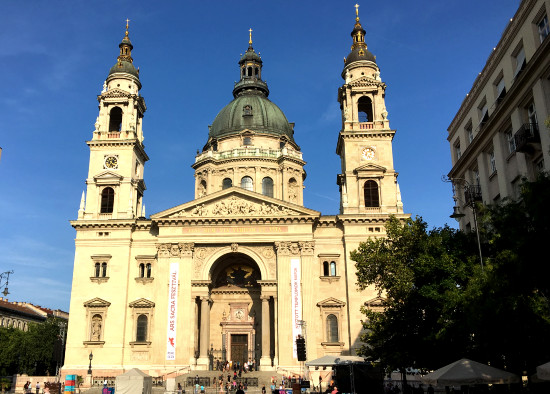
As we cycled down one of the city’s main streets we couldn’t help but notice the St Stephen’s Basilica looming ahead. Consecrated in 1905 after half a century’s construction, the Basilica contains the mummified hand of St Stephen.

The streets all around were busy with pedestrians since it was the main restaurant and shopping area, and a bit difficult to manage with our bikes. So we headed next towards the Dohány Street Synagogue, but it was a holy day and the synagogue was closed to non-Jews. Peering through the arches and fences we could still see the Jewish Cemetery which holds the remains of the more than 2,000 people who died in the ghetto during WWII, as well as the Tree of Life (1991) whose leaves bear the names of those who died during the persecution.

We continued on along the main boulevard past several museums until we reached the Central Market Hall. This grand old building houses an enormous covered market with an upstairs area largely devoted to food stalls selling the iconic Hungarian specialties, such as Goulash. We were not allowed in with our bikes and had no locks for them, so could only take a few photos and leave, before cycling back to our ship.

This evening before dinner we were treated to some traditional Hungarian folk music and dancing in the ship’s lounge and bar area. Although the girls looked very pretty in their national costumes and I love Hungarian violin music, for me, the most interesting item was the instrument that looked like a carved wooden writing desk, but was in fact a type of hammered dulcimer, developed in Budapest in the late 19th century. It is known as a Cimbalom or Cimbál and is played by striking the strings with two beaters or hammers.

The view during dinner of the Parliament Building as the light faded was a spectacular sight. It is apparently the third largest Assembly building in the world. Then to cap off a wonderful 15 day journey, the Captain took us on an evening cruise up and down the river to see the city illuminated like a fairyland. This was the highlight of our trip.

Most of the ship’s guests headed up to the roof deck to take in the sights, taking countless photos. The Buda Castle area was certainly the best vista.
We had really enjoyed our river cruise, which came to an end after breakfast the next day. We made our way to the airport content in the knowledge that we would be back to catch up on the sights we had missed in only another week, when we were to take a 9 day coach tour through this part of central Europe.

